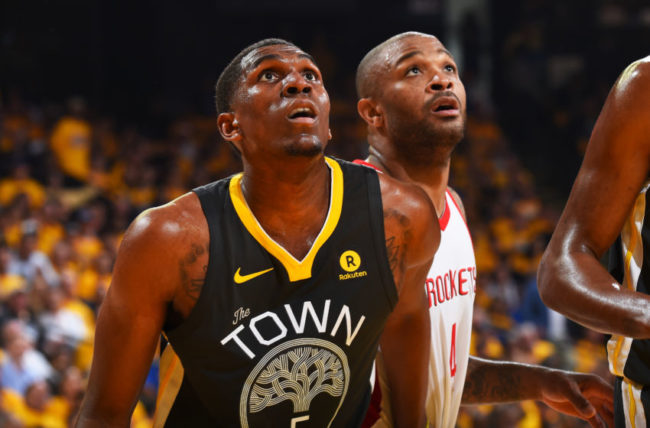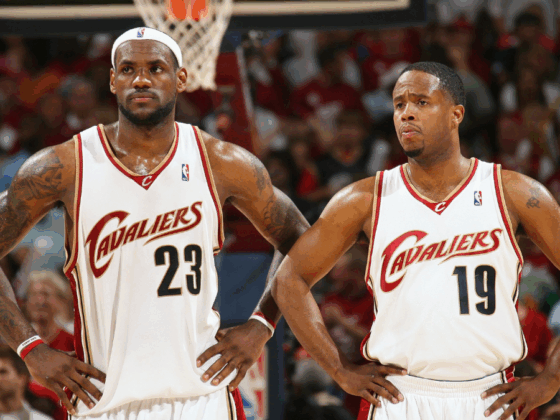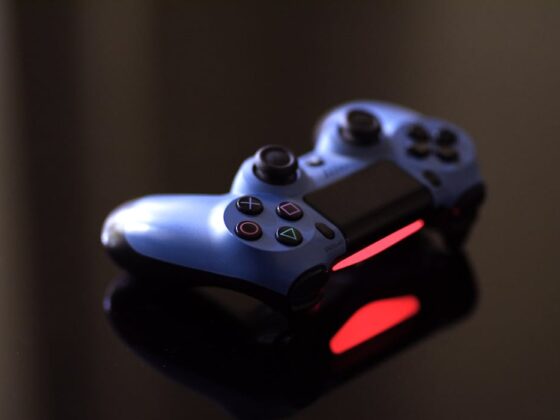
Once again in the NBA postseason, the Golden State Warriors are proving to everyone that they are the league’s overlords. They will not be stopped in the near future. Their game three win over the Houston Rockets was one of the most brutal beatdowns in NBA history, and the most brutal sports game I’ve witnessed since I saw Germany dismantle Brazil 7-1 in the 2014 FIFA World Cup. Pretty much everything went right for the Warriors. They executed their game plan on both ends perfectly, notably shutting down the Rockets pick-and-roll game. A lot of credit can be given to an unlikely hero in Kevon Looney.
It is always difficult to single out one specific player in a 41-point blowout, but one player who particularly impressed me was Looney, and his minutes deserve some attention.
You might be asking yourself this: Why is this NBA Writer focusing on a guy who played just 15 minutes out of a possible 48? The answer: Looney’s play is just another example that what Bob Myers has done in Golden State is something to be appreciated and respected instead of something that people use to suggest that he ruined the NBA. In an era that is being characterized by switching and asking big men to move out into space, finding a player like Kevon Looney at the end of the first round, and making sure he develops enough to play against one of the best pick-and-roll duos since Stockton and Malone, is quite incredible.
In a game where Stephen Curry’s passionate shouting and Draymond Green’s rim-protecting got the majority of the headlines, I’m not sure enough is being made of how ridiculous it is that a guy who slid down the draft board in 2015 is coming in and defending in the hardest possible way. Most big men are horrendous in space, with the likes of Hassan Whiteside and Serge Ibaka being exposed in the playoffs for struggling against guards. However, Kevon Looney appears to be as comfortable as anyone, even his hall-of-fame team-mate Draymond Green, at moving out and occupying guards on defense.
One of the major reasons the Rockets have switched to a slow, more mechanical offense, is to try and create switches and mismatches that are favorable for their elite guard pairing. The strategy worked against the Timberwolves, who didn’t have a single big man capable of defending anywhere outside of the paint, and to a slightly lesser extent against the Utah Jazz, with the Rockets strategy making Rudy Gobert look mortal after all.
One of the ways the Houston Rockets try to attack teams is in transition. They create the matchup they want and they will get the ball to their mismatch-creator quickly. In the video below, Eric Gordon receives the ball in transition and thinks he has a favorable advantage against Kevon Looney. Gordon attempts a crossover, but Looney stands firm and doesn’t allow Gordon any room on either side, which is something that Gordon was taking advantage of in game two.
The majority of reserve big men simply got destroyed by the Rockets slow, mismatch-creating style of play in the second half of the season. Looney might be the first reserve man to hold his own against all of their guards.
The play below is slightly different, as this involves some off the ball defense. James Harden drives into the paint and meets a roadblock, so he looks to execute a very basic secondary action, which is a dribble hand-off to a cutter attacking the corner.
PJ Tucker was Looney’s original man, but he moves away and Eric Gordon attacks the corner quickly off the switch. But Looney gives Gordon a quick bump and makes sure he cuts to the perimeter, rather than to the paint. This was the correct decision because the shot clock was winding down, and Gordon was always going to get trapped in the corner as Harden wasn’t in much of a position to cut away from the basket and create space. Not only was this intelligent half-court defense, but it was a sign of physicality which is key if you are going to stop the Houston Rockets. Looney executed perfectly.
Many young big men would be playing with fear if they were asked to switch onto a future hall of fame guard, but Looney appears to enjoy the task. In this clip, the Rockets force Shaun Livingston to switch onto Luc Mbah a Moute, and this time, Chris Paul finds himself in isolation against Kevon Looney.
Looney shuffles his feet perfectly to make sure that Paul cannot go to either side of him, and the only real options Paul has are to attempt to draw a foul or just take a contested jumper. This is one of the major flaws of what Houston is trying to do. The lack of secondary action is forcing them to take shots in situations they think are favorable, but actually aren’t in the slightest.
From a Warriors point of view, this defense from Looney is simply unfair. It remains to be seen if there is actually a way to attack this Warriors team effectively. The Rockets create a switch and manage to get their second best player on a bench big. But the ninth man on the Warriors depth chart holds his own against one of the best point guards to ever play the game. How is that fair?
Many thought that the switching nature and slow half-court offense would give the Rockets a slight chance in the Conference Finals. But so far, the Warriors have contained it because one of Draymond Green or Kevon Looney is on the court at all times.
When many discuss the construction of the Warriors roster, they believe it is easy to find role players because they already have their core star players in place. But you could easily make an argument that finding role players that are a perfect fit amongst those guys is actually a very hard task. The Warriors play at an insanely high level on both sides of the ball, so anyone who comes in has to fit on at least one of those ends at a high level.
The most amazing thing about Looney is that players like him do not grow on trees. Nearly every NBA team is trying to find a versatile big who can defend in space. Even teams that don’t run a switch-heavy defense need bigs who can go into space because five-out lineups are becoming all the more common. There are not many bigs who are completely comfortable going out on the perimeter, but the Warriors under the rule of General Manager Bob Myers have managed to get two of them. Players like Looney are a finite resource that every NBA team is scrambling to get, and Myers somehow managed to get him at the bottom of the first round. Once in Golden State, Steve Kerr managed to turn him into a viable weapon in the postseason. That’s the Warriors way.
The emergence of Kevon Looney in the postseason is great for his own financial future, as the Warriors declined his team option at the beginning of the season in a move that Bob Myers labeled “a mistake” back in April. Looney may choose to return to Golden State on a team-friendly deal, but players like him are not found in abundance on the free agency market. I think a team with an aggressive defense will give him a nice short-term deal and see if he can perform on a team that isn’t littered with four all-stars.
Breakthroughs like Kevon Looney are one of the main reasons that the Warriors keep on winning. They manage to find the perfect players for their schemes on both sides of the ball, and that is why Bob Myers deserves more credit and less hate for supposedly ruining the NBA. Great team building is hard, and Looney is just another example of how amazing this front office is, and of their place in the NBA history books.







